The Congos- Heart of the Congos
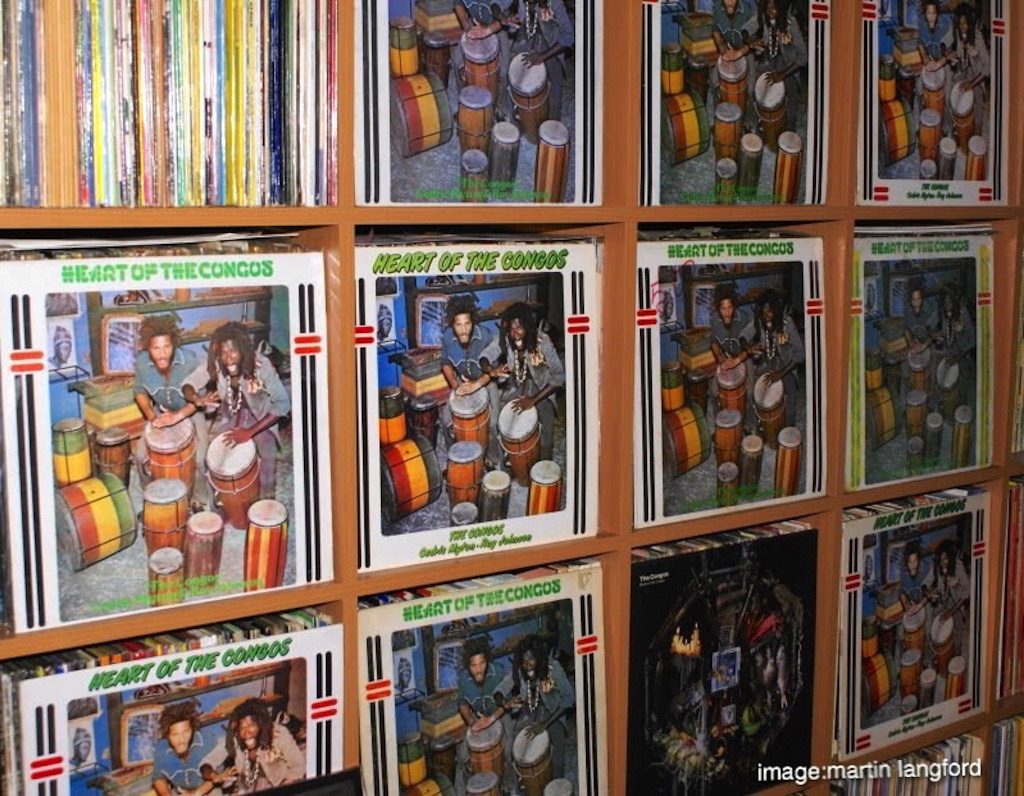
Dig into “reggae” or “roots reggae” and one album seems to stand out: The Congos: Heart of the Congos.[1] This record enjoyed a following but was made far more accessible by subsequent reissues, the most notable being a re-master done in the ‘90s by the Blood & Fire label in the UK.
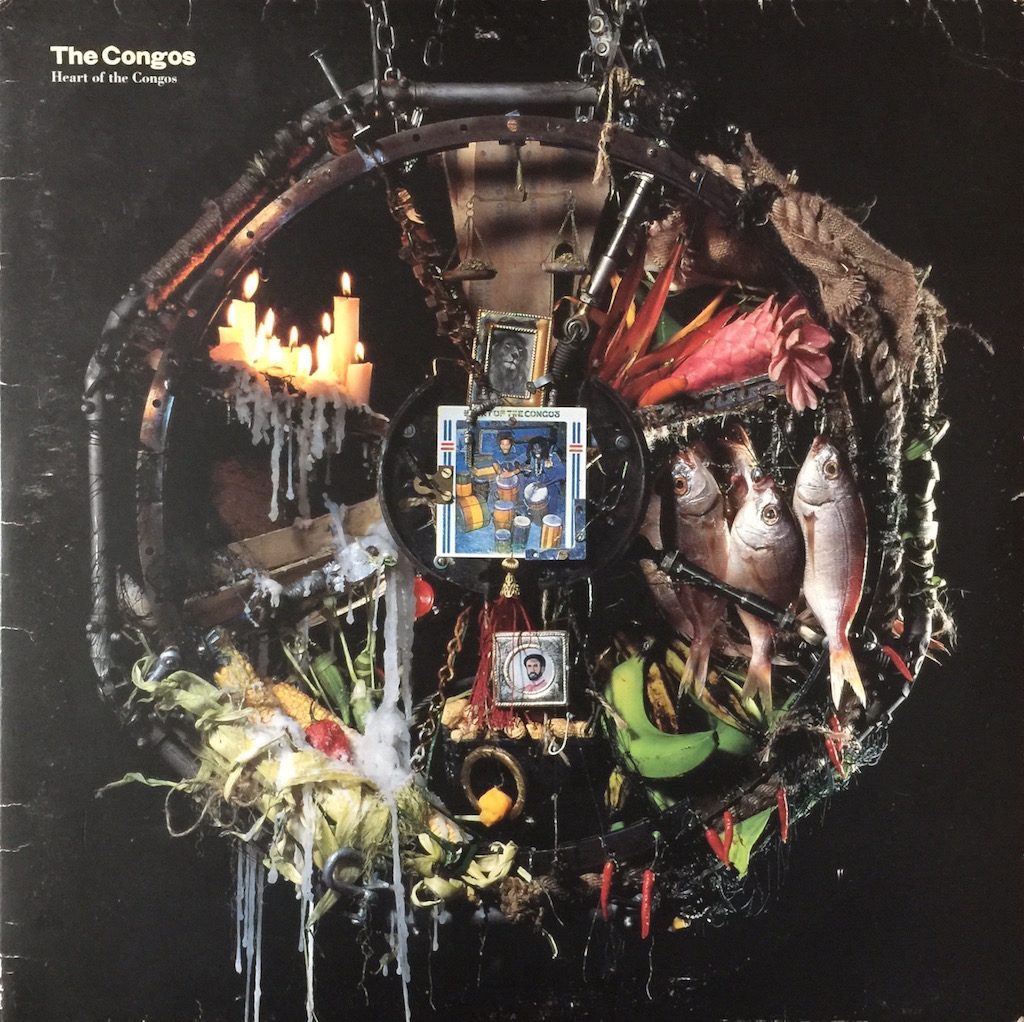
Even if you don’t think you like reggae or Jamaican music, this one is worth owning.
It combines beautiful vocal harmonies with a driving rhythm section and a production so in touch with the soul of the music that the recording is part of the performance itself. This is all the more remarkable given the circumstances in which it was made—a low budget studio built in the backyard of veteran producer Lee “Scratch” Perry.
Perry is one of the more eccentric figures of the Jamaican music scene, having come of age during the Jamaican sound system scene- records that weren’t intended for broad commercial distribution, but cut for DJs to play on massive portable sound systems in the streets and dance halls. Dubs and mixes were central to the success of these records—this is where Perry honed the skills that are evident on The Congos album.
As the music evolved, from “ska” and “rock steady” to “reggae,” the characteristic “offbeat” was retained but the pace was slowed down and greater emphasis was placed on the bass guitar as a percussion instrument. Unlike calypso or dance mixes, the music also became more political and carried strong traces of Rastafarian influence. This was not polished R &B, Jamaican style, but something grittier, more spiritual and less commercial in style. This was the real beating heart of Jamaican music.
According to the lore, Perry was at times like a man possessed; there are myriad stories of his mystical views of the recording process as well as his wizardry using very rudimentary recording equipment. [2] Perry allegedly burned down the studio where this recording was made to exorcise bad spirits. Whatever the truth, Perry had huge empathy for the music. That is what comes through on this record. You aren’t awed so much by studio gimmickry as Perry’s uncanny sense of the music’s soul—this is a record where the technology (such as it was) truly served the music. The recording is heavily processed, phase-y and at times, almost otherworldly, while the vocal parts, percussion and bass beat shine through.
The record originally issued on Perry’s Black Art label, copies of which are rare and quite valuable today. Even among those, there is considerable intrigue, from the different mixes on early pressings to the “hand-painted” cover art.[3]

The Blood & Fire re-do was clearly a work of love, done with great care and attention to detail. The label, co-founded by Steve Barrow and Mick Hucknall,[4] specialized in reissuing “roots reggae” records, including some of the more obscure mixes and dub records.
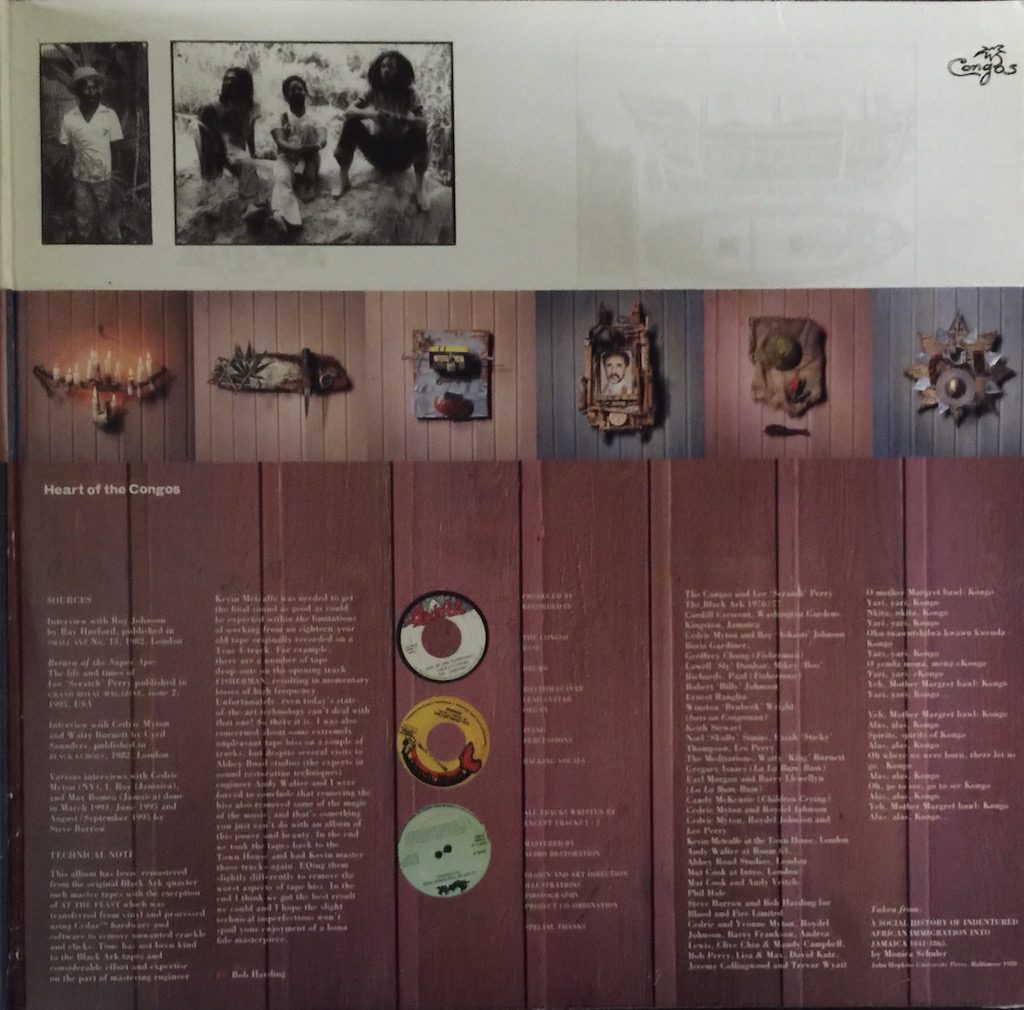
The extensive liner notes accompanying the Blood & Fire release not only detail the singers (the combination of Cedric Myton’s unique falsetto with Roydel Johnson’s dinstinctive tenor, working as The Congos), their connection to Lee Perry (Watty Burnett, who made several records with Perry, adds his baritone voice to the album), the back-up singers (The Meditations and the voices of The Heptones, among others) and musicians (an all-star cast of some of Jamaica’s best players, the core of which was The Upsetters, who functioned as Perry’s studio band), but describe the recording genius of Perry as an essential part of the album:
By the time Perry came to record the Congos, everything was right. The ambience of the studio, characterized by an instantly recognizable drum sound and the producer’s use of outboard equipment…, recorded on a 4-track TEAC[5] and all mixed and mutated through a Soundcraft board, soaks every groove of HEART OF THE CONGOS. His method of dumping tracks onto one track to free them for further overdubbing introduced an effect of degradation that became an essential component of the mix.
Steve Barrow, liner notes from Heart of the Congos, Blood & Fire BAFLP 009(October 1995).
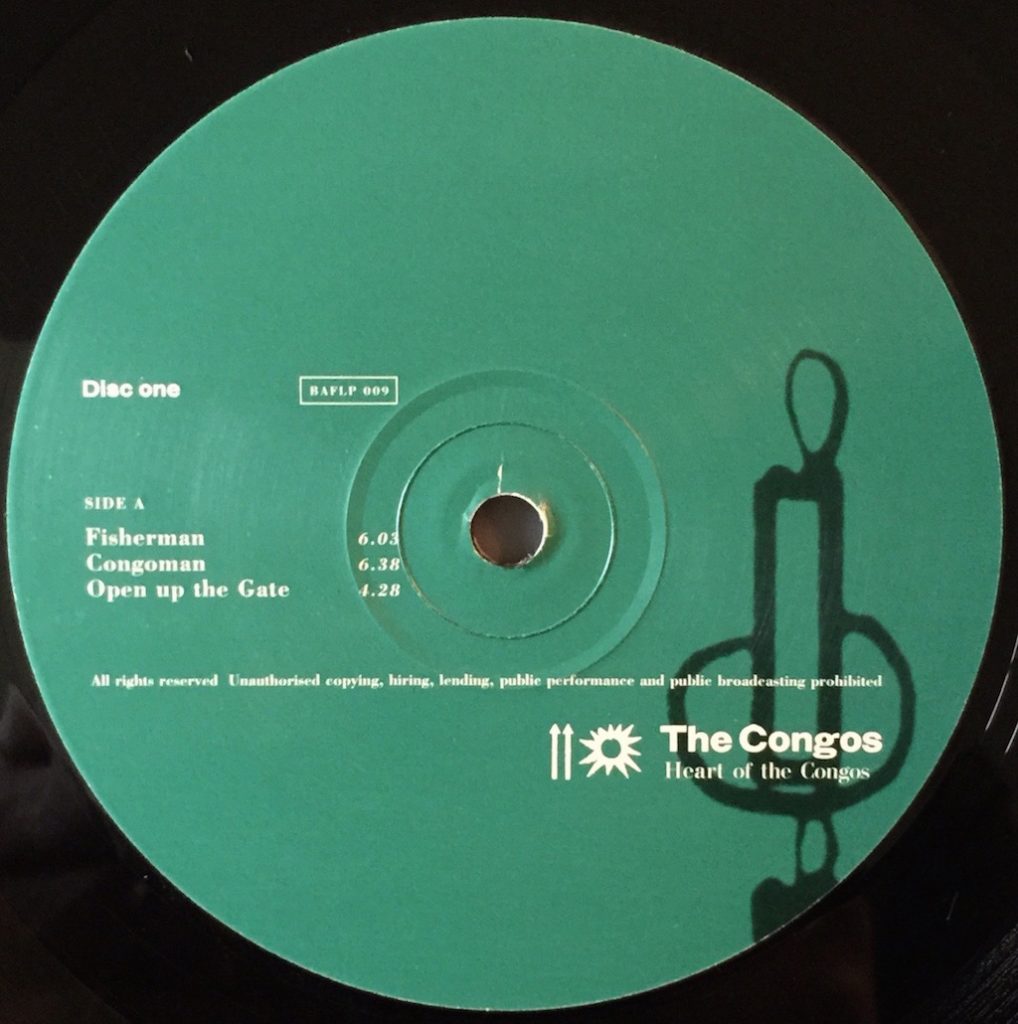
Blood & Fire used the original tapes, except for the track “At the Feast,” which was taken from a vinyl copy. The technical notes supplied by Bob Harding explain the challenges of working with the Black Ark tapes and mastering the record. The album also includes two additional tracks, “At the Feast” and “Nicodemus” and is spread over two LPs, which makes good sonic sense.
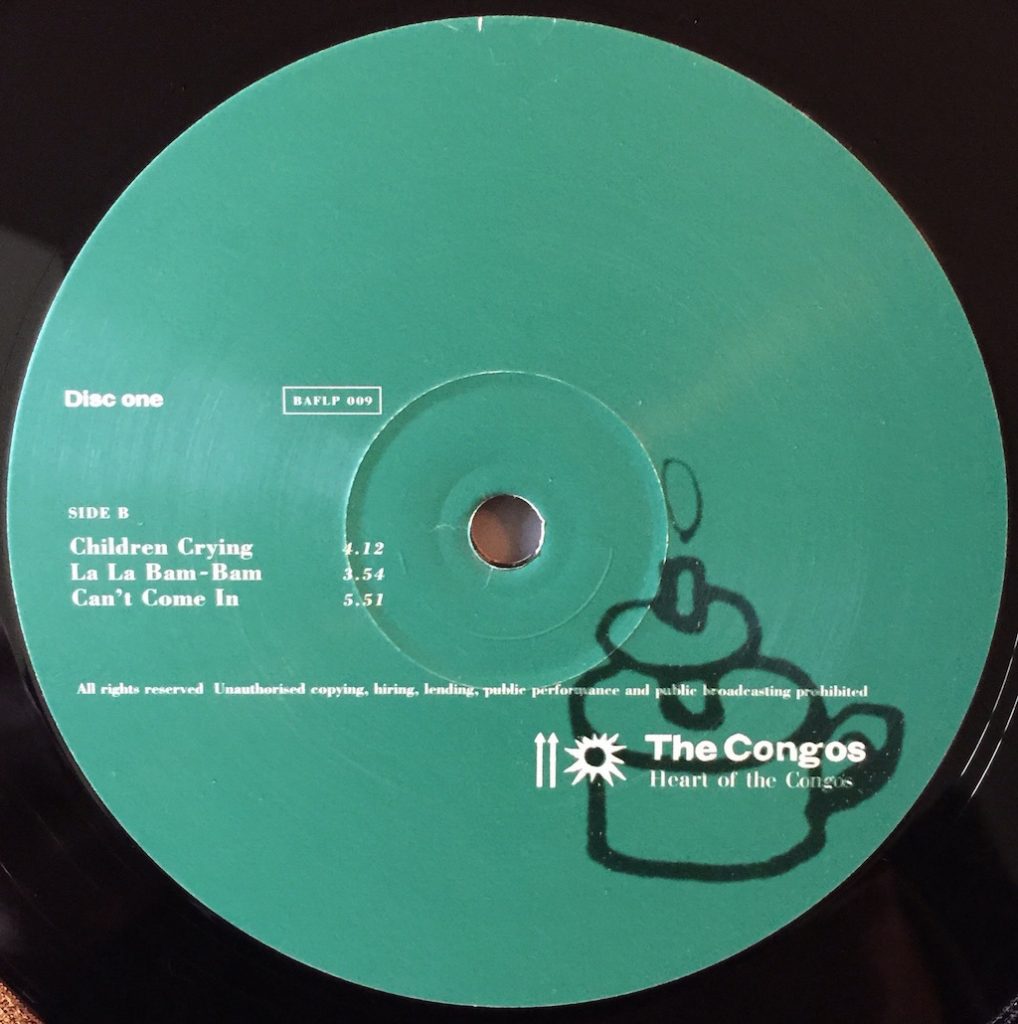
Some standouts include:
The opening track, “Fisherman,” which displays all the magic- the voices, the mellow, almost addictive background refrain and rhythmic progression (“row, fisherman, row”), the odd percussion bits and obvious biblical references of the lyrics playing off of the Jamaican street patois make this a track that will get into your head.
“Open the Gate”- has the lyrical beauty of the best soul singing set against a slow reggae beat—you can crank this up and energize your room with the bass pulse, but the song is so sweet you’ll probably want to listen rather than dance.
“Can’t Come In” shows off those killer harmonies (“keep on knockin’ but you can’t come in…”) with some great bass work and percussion.
“Sodom And Gomorrow” makes sense with its refrain “keep on burnin’”—the ascending and descending xylophone sounds with the repetitive beat and background voices will stone you.
“The Wrong Thing” showcases Cedric Myton’s stunning falsetto voice—the melody is gorgeous.
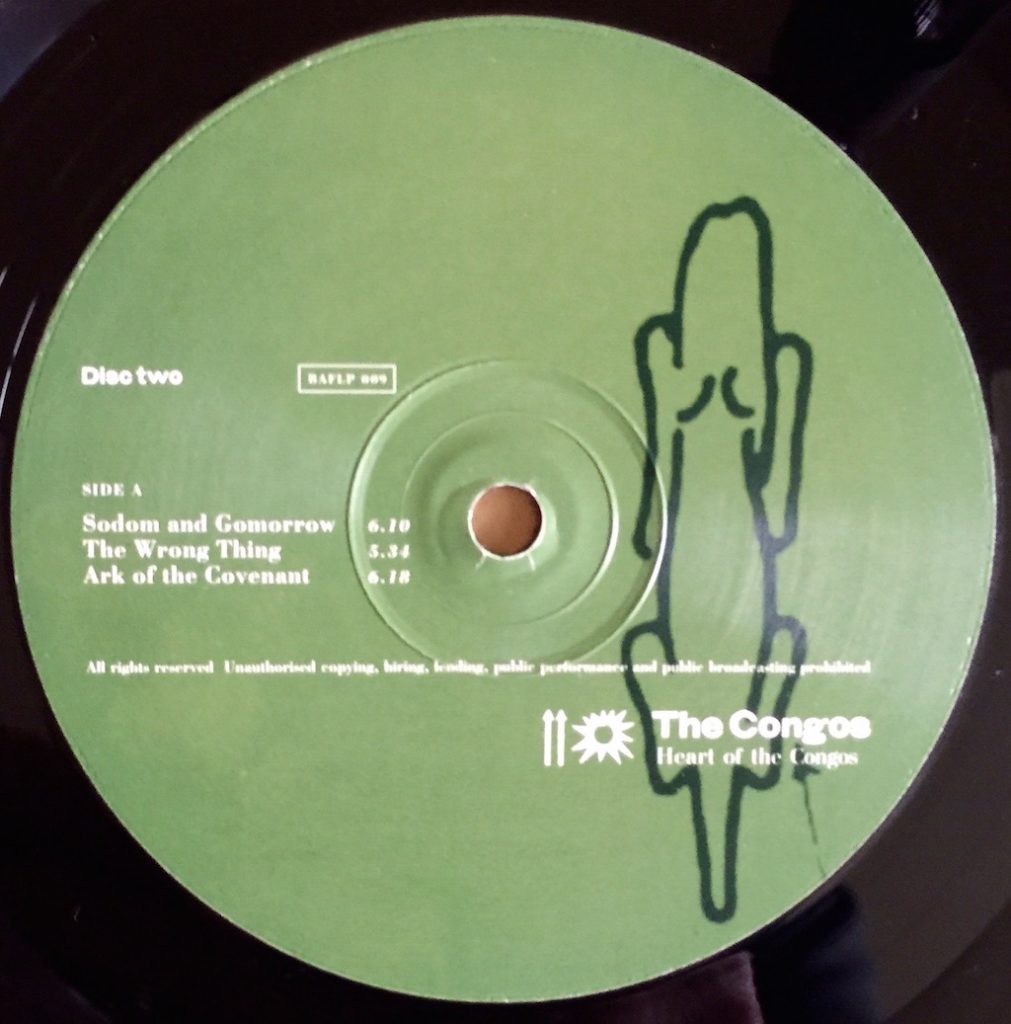
The restoration work done by Andy Walter on “At the Feast” is impressive—it isn’t noticeably removed in quality from the rest of the album.
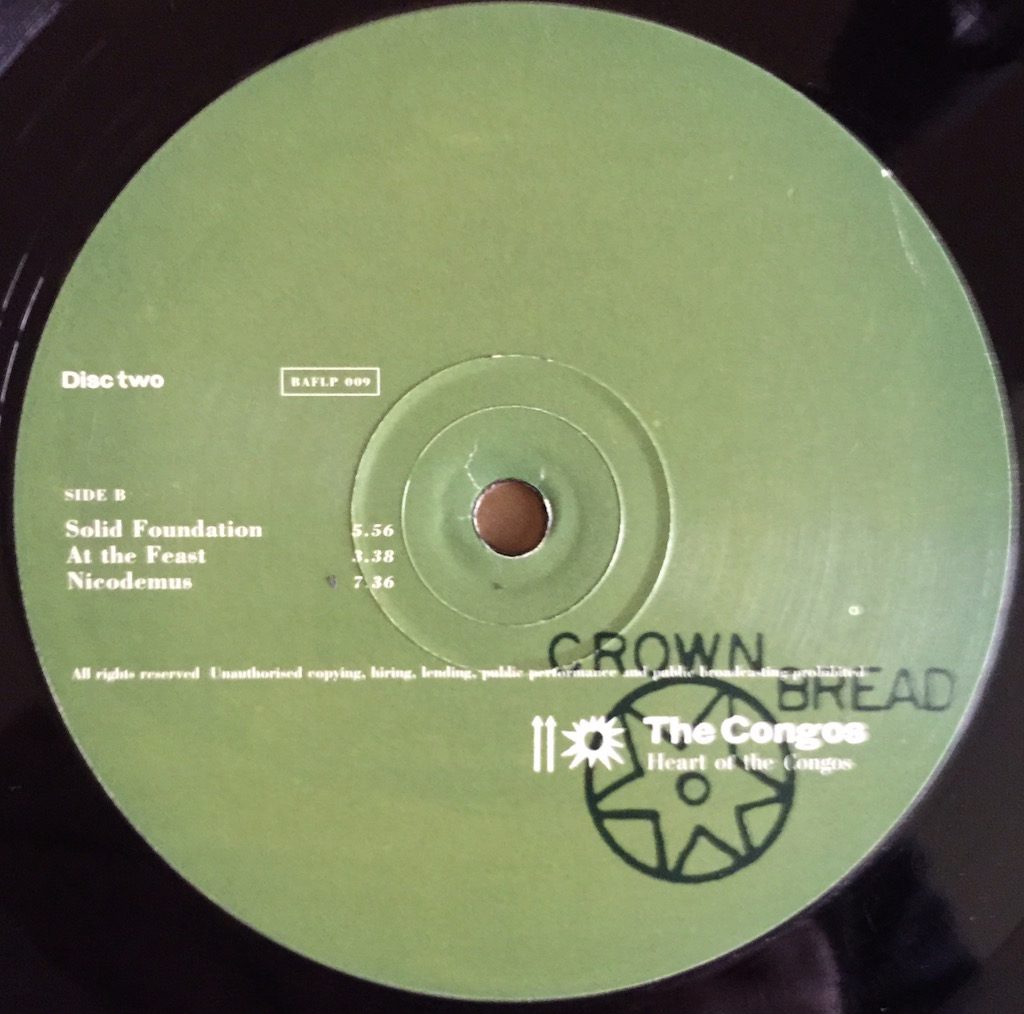
These Blood & Fire pressings are now fetching real money and are considered to be among the best extant.
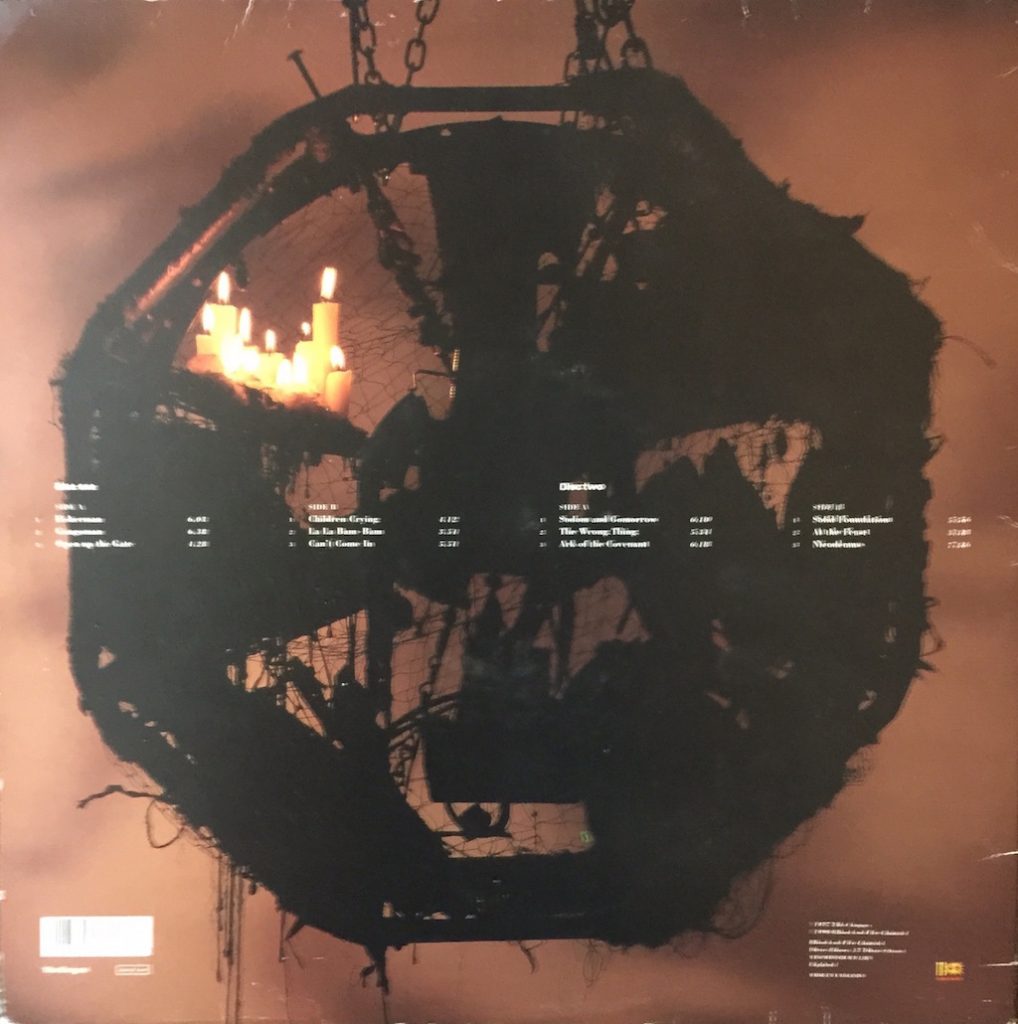 Blood & Fire also licensed Simply Vinyl to reissue Heart of the Congos in 2000. That label had a mixed reception among audiophiles; its pressings (the records themselves) were usually of high quality, but the sources used and the lack of information about them was a subject of ongoing consternation.[6]
Blood & Fire also licensed Simply Vinyl to reissue Heart of the Congos in 2000. That label had a mixed reception among audiophiles; its pressings (the records themselves) were usually of high quality, but the sources used and the lack of information about them was a subject of ongoing consternation.[6]
The Simply Vinyl copy is pressed on heavier, better quality vinyl but sounds far more “contained” than the Blood & Fire pressing—which has more harmonic information, better decay and punch. To me, it’s not even close sonically, so if you are going to buy one of these pressings, go for the Blood & Fire (The Simply Vinyl copies aren’t cheap now either, since they are also out of print).
Other alternatives include the Go-Feet issue, mastered by Denis Blackham (which I haven’t heard), though it does not have the extra material or lengthier track times of the Blood & Fire version. A VP Records issue currently available on vinyl is from a mix that I’m told sounds “speeded up.” (See also the Katz article, fn. 3 below, which attributes this to the mastering).
Blood & Fire stopped issuing releases sometime in 2007. Though there was some talk about re-booting the label in 2014 (along with one release that year), nothing more has come of that to my knowledge.
In a brief conversation with Chris O’Brien, the manager of VP/Greensleeves in the UK, I was told that VP is in the midst of working on a new, high quality re-master of Heart of the Congos, slated for release sometime in 2017. I will provide an update as more information becomes available.
Bill Hart
Nov. 3, 2016
___________________________________________________
My thanks to Martin Langford for the image of his collection of copies of this wonderful record.
[1] Also known as Heart of the Congo Man by The Congoes.
[2] How Perry managed to get the sounds from his Black Ark studio remains a subject of great fascination. Sound on Sound recently covered an effort to recreate what Perry achieved and provided some insight into the gear Perry originally used: http://www.soundonsound.com/people/lee-scratch-perry-daniel-boyle-recording-back-controls
[3] An astute article by David Katz on the early mixes of the album as well as various reissues, first published in Beat magazine, can be found here: http://www.upsetter.net/scratch/station/2006/2006_congos.htm
[4] You may remember Hucknall as the lead singer of the band Simply Red. Barrow is a highly regarded historian of reggae music who has served a number of roles over the years as producer, curator and author.
[5] This machine, which had semi-professional aspirations, was readily available under a brand better known for consumer gear in the United States; multi-track analog tape machines for studio use were more costly and complex to own and maintain. See fn. 3 above regarding the gear used in Perry’s studio. See also an overview of the TEAC 3340 at the vintageknob.
[6] Simply Vinyl is, as far as I know, out of business.
___________________________________________________________